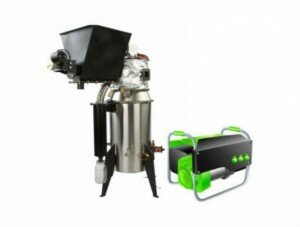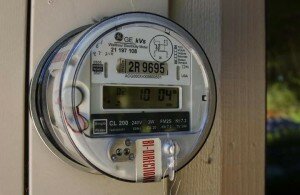For many people contemplating producing their own electricity supply by micro-generation, part of the attraction is the possibility of exporting any surplus to the national grid.
The National Grid
Confusingly, exporting electricity to the grid does not actually involve selling it to the National Grid itself – one of the largest utilities in the world, which owns the high-voltage transmission system in England and Wales and operates the system across Britain.
Instead, supplying the grid with surplus power requires you to sell it to a utility company – which now are being required to obtain at least 10 per cent of their electricity supply from renewable, sustainable sources. As a result, if your house already has a connection to the national grid, you can sell the surplus electricity generated back to your energy supplier – although there are conditions and some bits of red-tape attached.
 MovEnergy Generator 25kWh provides kWh of electricity at 3c, price of fuel or biomass including, most countries redeemed the electricity at least twice.
MovEnergy Generator 25kWh provides kWh of electricity at 3c, price of fuel or biomass including, most countries redeemed the electricity at least twice.
FUEL SOURCES: Fuel, Methane, Landfills Gas, Oil/Gas, Syngas, Waste Oil, Natural Gas, Gasogene, Mazout, Biomass Gasifier, Fuel+Water
Selling Your Electricity
There are two main ways to go about exporting your renewable electricity – via flat-rate generating payments or net metering arrangements.
Alternatively, if your home generation system is likely to produce more electricity supply than you need yourself, it is probably worth looking into a net metering arrangement. This will provide a higher price for each unit of electricity generated over and above your household’s own needs – but you’ll need to get a properly approved export meter in addition, to measure your surplus generation output.
Net Metering Overview
Net metering or net energy metering (NEM) allows electricity customers who wish to supply their own electricity from on-site generation to pay only for the net energy they obtain from the utility. NEM is primarily used for solar photovoltaic (PV) systems at homes and businesses (other distributed generation (DG) customers may have access as well). Since the output of a PV system may not perfectly match the on-site demand for electricity, a home or business with a PV system will export excess power to the electric grid at some times and import power from the grid at other times. The utilities bill customers only for the net electricity used during each billing period. Alternately, if a customer has produced more electricity than they have consumed, the credit for that net excess generation will be treated according to the NEM policy of the state or utility.
Examples of other territories’ approaches to net metering
California: Under California law, the payback for surplus electricity sent to the grid must be equal to the price charged at that time. It can never be negative, meaning the customer cannot make money from selling the electricity back. If a user generates more electricity than they use over a period of a year, they are billed zero. In effect, excess electricity generated is given to the power company.
Europe: Germany and Spain, on the other hand, have adopted a price schedule, or feed-in tariff, whereby customers are paid for any electricity they generate from renewable sources on their premises. The total electricity generated is counted on a separate meter, not just the surplus fed back to the grid. In Germany, for the solar power generated, a feed-in tariff of more than three times the retail rate per kWh for residential customers is paid in order to boost solar power installation.
Colorado: There is no limit on enrolment, system size is limited to 2 MW and excess is credited to customer’s next bill. The utility pays the customer at end of each calendar year for excess kWh credits at the average hourly incremental cost for that year.
Australia: Australia’s feed-in tariff is actually net metering, except that it pays monthly for net generation at a higher rate than retail. In Victoria, householders are paid 60 cents for every excess kilowatt hour of energy fed back into the state electricity grid. This is around four times the current retail price for electricity. In Queensland, the Solar Bonus Scheme pays 44 cents for every excess kilowatt hour of energy fed back into the state electricity grid, around three times the current retail price.


